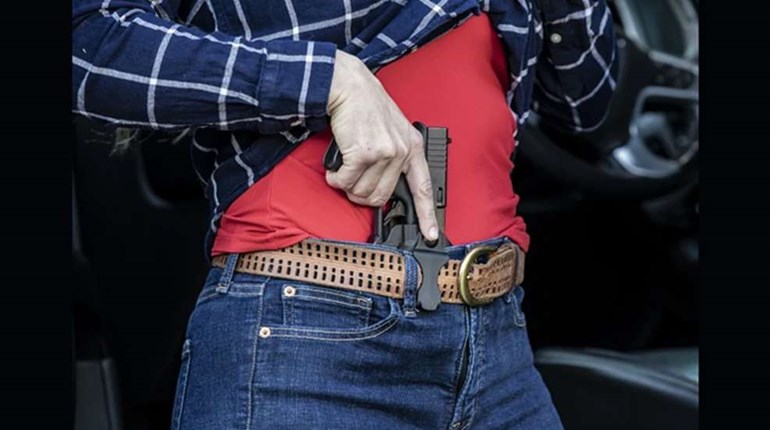
The military has long made use of verbal commands and hand signals in combat, and such means of communication can be equally useful for the armed citizen faced with a life-threatening emergency.
When considering a personal-defense plan, people rarely consider the need to communicate with others who may be on your side. Waiting until the bullets start flying to try to come up with signals that can be understood is probably not a very good idea. When dealing with a violent criminal attack, we need to be able to communicate with our partner, both verbally and with hand gestures, in order to present and utilize a united defense.
We may need to communicate the fact that we have to reload or clear a malfunction, in which case the partner will need to cover us. We also may need to communicate to a partner the number and/or the location of our attackers. Furthermore, we may want to let our partner know what our plan of defense entails, where one is going and where one’s partner needs to go. All of these things, and others, need to be worked out ahead of time so there are no misunderstandings in the midst of a life-threatening emergency.
The first rule of defensive communication is to keep it simple. In the midst of a gunfight might not be the time to say, “I’ve run out of ammo and am going to need to reload my pistol.” The more effective comment might be, “Loading!” To which your partner replies, “Covering!” With these two words, you have established what you are dealing with and your partner has indicated he/she understands and will cover you until you can get back into the fight.
A gunfight also might not be the best place to try to get too tricky with your communication. Hollering “Left” when you actually mean to go right in an attempt to fool your attackers may very well also confuse your partner. The most important thing is to come up with short, clear forms of communication that you’ve worked out ahead of time, so that your partner knows exactly what is going on and what needs to be done.
There may also be situations during a criminal attack, or any tense situation, where verbal communications are not the best idea.
There is also the matter of auditory exclusion that needs to be considered and dealt with. That is the phenomenon where, under certain stressful conditions, a person’s hearing is often impaired. Gunshots may sound like firecrackers being set off a few hundred yards away, and normal, conversational tones may not be heard at all. For that reason, defensive communications should be as loud as they are clear. Defenders should shout it out like they are making a speech to a crowd without the use of a microphone.
Communication is also important when a potential threat is spotted. For this, we often will use code words to alert our partner without alerting everyone else who might be around us. I might say to Mary, “Sadie, is it 3-o’clock yet?” By using a fake name, preferably one she hates, I have alerted her to a possible problem and told her that it is at 3-o’clock to her position.
Some years ago, an Arizona woman was taken at gunpoint during a robbery. She called to her husband, “Cowboy, there is a man here to see you.” The armed robber was neutralized because the couple had agreed on the word “cowboy” as an alert that an armed robbery was happening in their place of business.
We may also use code words when we need our partner to create a diversion that allows us to arm ourselves or draw our handgun. My partner, being held hostage, needs to hear a code word to know that I am ready to shoot and need the partner to kick her feet out and drop like a dead weight so that I can get a head shot.
When you think about it, code words can really be of value to us in our everyday lives, as well as in a defensive situation. Just about all of us have been to a social event that we can’t get away from fast enough, yet we don’t want to offend our hosts or those around us. The more we establish and work with code words in our everyday lives, the easier it is to implement them during a crisis.
There may also be instances during a criminal attack, or any tense situation, where verbal communications are not the best idea. In these scenarios, it is an excellent idea to have worked out some hand signals with your partner. I once examined several sheets of hand signal illustrations from the military and found them to be too many and too confusing. And, in a personal-defense situation, it doesn’t matter what the military does—it only matters what you and your partner have worked out and agreed upon. Again, keep it simple.
When we have a partner to back us during a criminal attack, our advantage isn’t added to, it is multiplied. But, this is the case only when we have previously discussed a personal-defense plan and worked out ways—both verbally and non-verbally—to communicate while dealing with a criminal attack. It is an excellent idea to take the time with your spouse, business partner or good buddy and work out the signals that will help you both survive.

































